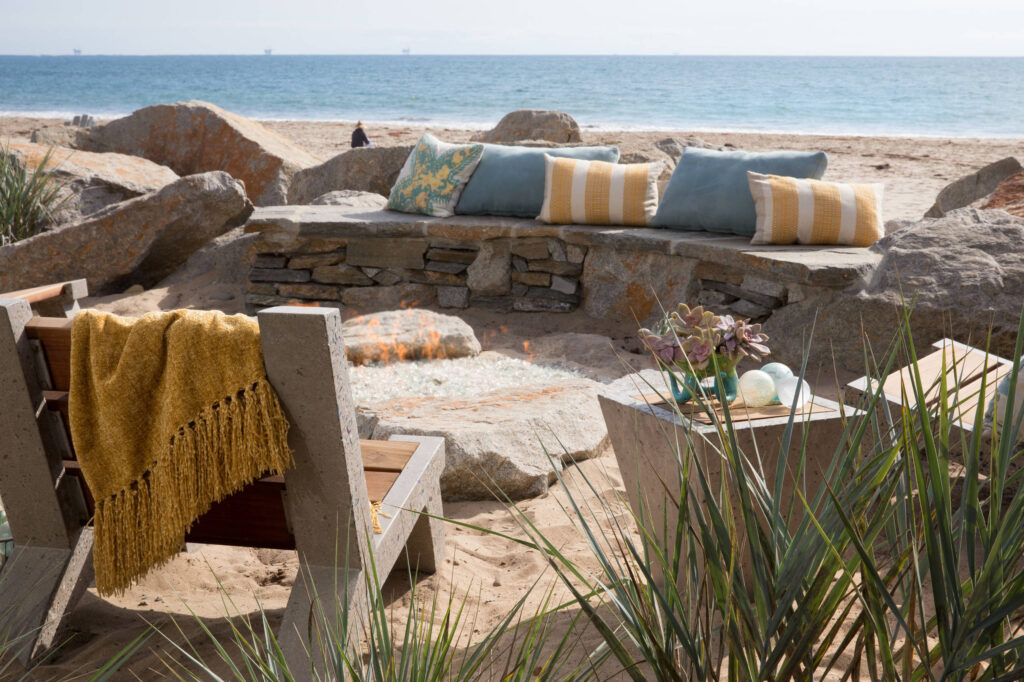Picture yourself sitting on a picturesque beach, surrounded by crashing waves and golden sand. The sun is starting to set, casting a warm glow over the horizon. As the evening chill sets in, you find yourself yearning for the cozy crackle of a fire pit. But wait, can you actually use a fire pit in a beach or coastal area? In this article, we will explore the ins and outs of using a fire pit in these stunning natural settings. So grab your beach towel and let’s dive into the world of beachside bonfires!
Safety Considerations
Fire Regulations
When using a fire pit in a beach or coastal area, it is essential to be familiar with the fire regulations specific to that location. Different beaches or coastal regions may have their own set of rules and restrictions when it comes to open fires. Some may require permits or have designated fire pit areas, while others may prohibit the use of fire pits entirely. It is crucial to research and comply with these regulations to ensure a safe and enjoyable experience.
Wind Conditions
The wind plays a significant role in the safe use of fire pits, particularly in beach or coastal areas. It is essential to pay attention to the wind conditions and adjust your fire pit usage accordingly. Strong winds can cause flames to spread, increasing the risk of accidents or uncontrolled fires. Assess the wind speed and direction before starting a fire, and if the conditions are unfavorable, it may be best to postpone your plans until the wind calms down.
Fuel Restrictions
When using a fire pit in a beach or coastal area, consider any fuel restrictions that may be in place. Some areas may have limitations on the types of fuels that can be used, such as prohibiting the use of wood due to concerns about burning driftwood or damaging the environment. Be sure to check local regulations or guidelines to determine the appropriate fuel for your fire pit. Using the wrong fuel can not only lead to legal consequences but also pose a safety hazard.
Selecting the Right Fire Pit
Materials and Construction
Choosing the right materials and construction for your fire pit is essential, especially when using it in a beach or coastal area. Opt for fire pits made from durable materials that can withstand exposure to sand, saltwater, and changing weather conditions. Stainless steel and cast iron are popular options known for their durability. Additionally, consider fire pits with rust-resistant coatings to protect them from the corrosive effects of saltwater. Investing in a high-quality fire pit ensures longevity and safe usage in a beach or coastal environment.
Size and Portability
Consider the size and portability of the fire pit when selecting one for a beach or coastal area. A smaller, more compact fire pit is often preferable as it is easier to transport and set up on sandy or uneven ground. Look for fire pits that are lightweight and come with handles or carrying cases for convenient transportation. While a larger fire pit may provide a grander ambiance, it may not be practical or safe in a beach or coastal setting where space may be limited and uneven terrain can pose challenges.
Heat Output
When choosing a fire pit for a beach or coastal area, pay attention to its heat output. Cooler coastal breezes may necessitate a fire pit with a higher heat output to ensure that you and your guests stay warm and comfortable. Look for fire pits that offer adjustable heat settings, allowing you to customize the warmth according to the weather conditions. It is crucial to strike a balance between the fire pit’s heat output and the surroundings to create a cozy atmosphere without overwhelming the space or endangering nearby individuals or objects.
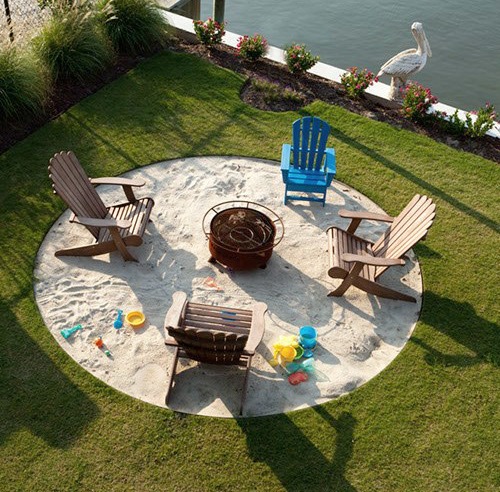
Preparing the Fire Pit Area
Checking Local Regulations
Before setting up your fire pit in a beach or coastal area, it is vital to thoroughly check the local regulations regarding fire pit usage. Research any specific guidelines or restrictions that may be in place to ensure compliance and avoid any legal issues. Some beaches or coastal regions may require permits or only allow fire pits in designated areas. By familiarizing yourself with these regulations, you can ensure a safe and enjoyable experience while minimizing the risk of penalties or fines.
Clearing the Surroundings
Clearing the surroundings is an essential step in preparing the fire pit area in a beach or coastal environment. Remove any flammable materials, such as dry brush or fallen leaves, from the vicinity of the fire pit. Also, ensure that there is a sufficient clearance around the fire pit to prevent accidental fires or damage to nearby objects. Clearing the surroundings not only reduces the risk of fire spreading but also creates a safer environment for you and your guests to enjoy the fire pit.
Choosing a Safe Location
Selecting a safe location for your fire pit is crucial when using it in a beach or coastal area. Avoid placing the fire pit too close to any structures, vegetation, or flammable objects. This includes beach umbrellas, towels, or beach chairs that could potentially ignite from the heat or flames of the fire pit. Furthermore, consider any wind patterns or potential changes in tide that could affect the fire pit’s placement. By choosing a safe location, you can minimize the risks associated with fire pit usage in a beach or coastal environment.
Fire Pit Accessories
Fire Screens and Spark Arrestors
Using fire screens and spark arrestors with your fire pit is highly recommended, especially in beach or coastal areas. These accessories serve as a protective barrier, preventing sparks and embers from escaping the fire pit and potentially causing fires or injuries. Fire screens are generally made from heat-resistant materials and are designed to enclose the fire pit, allowing for proper ventilation while keeping the surroundings safe. Spark arrestors, on the other hand, attach to the chimney or opening of the fire pit, acting as a barrier against flying sparks. Incorporating these accessories provides an extra layer of safety and peace of mind.
Fire Extinguishers and Water Source
Having fire extinguishers and a readily available water source nearby is essential when using a fire pit in a beach or coastal area. In case of an emergency or an uncontrollable fire, these tools can help extinguish the flames quickly and prevent further damage. Ensure that you have a fire extinguisher specifically designed for outdoor fires, such as those labeled for use on wood or charcoal fires. Additionally, keep a bucket of water or a hose close by to douse the flames if necessary. Being prepared with these fire safety essentials significantly reduces the risk of accidents or disasters.
Fireproof Mat or Base
Using a fireproof mat or base underneath your fire pit is a wise precautionary measure, particularly in a beach or coastal environment. Sand or gravel can act as an effective base, providing stability to the fire pit and preventing the heat from reaching the ground. This helps to protect the surface beneath the fire pit from scorching or damage. If a fireproof mat specifically designed for fire pit use is available, it can serve a similar purpose. The mat acts as a barrier between the fire pit and the ground, ensuring safe usage and minimizing any potential environmental impact.
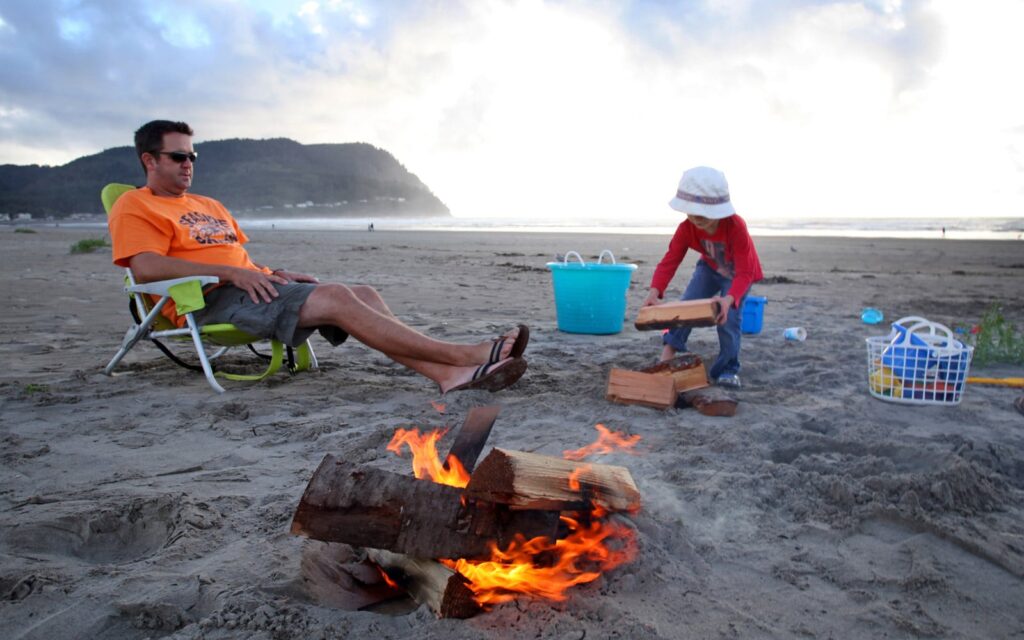
Other Safety Measures
Supervising the Fire
Always ensure that the fire is adequately supervised when using a fire pit in a beach or coastal area. Assign at least one responsible person to watch over the fire at all times. This individual should be knowledgeable about fire safety and capable of handling any potential issues that may arise. By closely monitoring the fire, you can promptly address any flares or sparks that could pose a risk to nearby individuals or objects. Remember, negligence and lack of supervision can quickly escalate into dangerous situations, so never leave the fire pit unattended.
Extinguishing the Fire Properly
Properly extinguishing the fire is a critical step in fire pit safety. Before leaving the fire pit unattended or calling it a night, ensure that the fire is completely out. Use water or sand to fully extinguish the embers and hot coals, making sure there are no lingering sparks. Stir the ashes and residual materials to ensure that all heat is eliminated. Once the fire is extinguished, let the fire pit cool down before handling or packing it away. Following these steps ensures that the fire is completely extinguished and minimizes the risk of accidental fires.
Disposing of Ashes Safely
Disposing of ashes safely is an essential part of fire pit usage, even in beach or coastal areas. Allow the ashes to cool completely before handling or disposing of them. Once cooled, transfer the ashes to a non-combustible container, such as a metal bucket. Avoid using plastic containers or bags, as the residual heat can melt or ignite them. Additionally, make sure the container is stored in a safe location away from any combustible materials. Many beach or coastal areas have specific guidelines for ash disposal, so be sure to follow the recommended procedures to prevent any environmental damage.
Environmental Impact
Protecting Wildlife and Vegetation
When using a fire pit in a beach or coastal area, it is crucial to be mindful of the surrounding wildlife and vegetation. Avoid setting up the fire pit near sensitive habitats or nesting areas to minimize disturbance to wildlife. Carefully choose a location that does not threaten any plant or animal species. Be cautious when collecting firewood or beach debris, ensuring that you are not damaging or depleting any vital resources. By protecting wildlife and vegetation, you contribute to the preservation and sustainability of the beach or coastal environment.
Proper Waste Disposal
Proper waste disposal is essential to minimize the environmental impact of using a fire pit in a beach or coastal area. Avoid leaving any trash or debris behind after using the fire pit. Discard any food scraps, empty containers, or other waste materials in designated trash bins or recycling containers. If no such bins are available, take your waste with you and dispose of it properly off-site. Leaving behind litter not only damages the natural beauty of the beach or coastal area but also poses a threat to wildlife and marine life. By practicing proper waste disposal, you contribute to the overall cleanliness and conservation of the environment.
Avoiding Beach Erosion
Be mindful of beach erosion when using a fire pit in a beach or coastal area. Avoid setting up the fire pit near vulnerable areas, such as dunes or steep slopes, as the heat from the fire can expedite erosion processes. It is crucial to prioritize the protection and preservation of the beach or coastal environment. By mindful placement of the fire pit and avoiding areas prone to erosion, you help maintain the integrity and beauty of the beach.
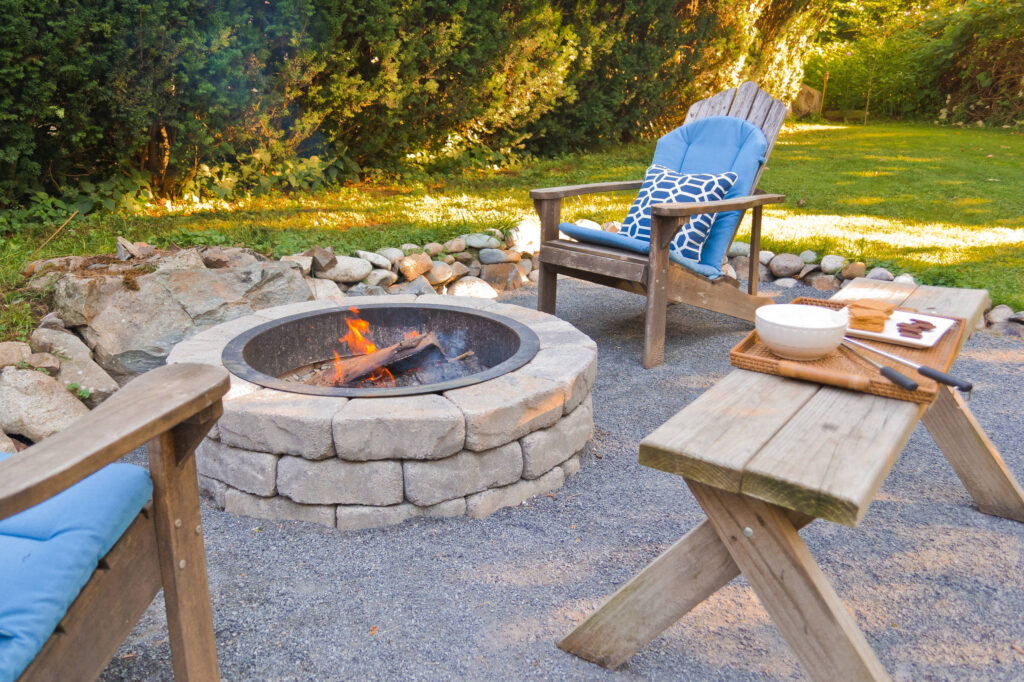
Enjoying the Fire Pit
Gathering Supplies
Gathering the necessary supplies for a beach or coastal fire pit session is an exciting part of the experience. Bring ample firewood, ensuring it is dry and suitable for burning. Consider bringing extra layers of clothing or blankets to stay warm, especially during cooler evenings or windy conditions. Don’t forget to pack essential items such as marshmallows, skewers, and graham crackers for a classic fireside smores session. By gathering all the supplies in advance, you can ensure a cozy and enjoyable time around the fire pit.
Creating a Cozy Atmosphere
To create a cozy atmosphere around the fire pit in a beach or coastal area, consider adding some additional touches. Set up beach chairs, cushions, or blankets for comfortable seating. Hang string lights or lanterns to provide soft, ambient lighting. You can also bring along portable speakers to play your favorite music or a Bluetooth speaker for a movie night under the stars. By adding these elements, you can enhance the overall atmosphere and make the fire pit experience even more memorable.
Fire Pit Activities
Fire pit activities can add an element of fun and excitement to your beach or coastal experience. Engage in activities such as storytelling, singing songs, or playing interactive games with your friends or family. Roasting marshmallows for smores or cooking meals over the fire pit can also be a delightful experience. By incorporating these activities, you create lasting memories and make the most of your time around the fire pit.
Alternatives to Fire Pits
Portable Gas Fire Pits
For those who prefer a more convenient and hassle-free option, portable gas fire pits are an excellent alternative to traditional fire pits. These fire pits are fueled by propane or natural gas instead of wood or charcoal. They offer instant heat and adjustable flame levels at the turn of a knob, eliminating the need for firewood and the associated mess and clean-up. Portable gas fire pits are usually lightweight and easy to transport, making them ideal for beach or coastal areas where convenience and ease of use are essential.
Solar-powered Fire Pits
If you are environmentally conscious and looking for an eco-friendly alternative to fire pits, solar-powered fire pits are an excellent choice. These fire pits utilize energy from the sun to generate flames or provide heat. Solar-powered fire pits are often equipped with solar panels and batteries, allowing them to store energy during the day and release it in the form of heat or light in the evening. While not as common as traditional fire pits, solar-powered options are an emerging trend in outdoor heating solutions and can be an eco-conscious option for beach or coastal areas.
Battery-operated Flameless Fire Pits
For those seeking a safe and low-maintenance option, battery-operated flameless fire pits are worth considering. These fire pits use LED lights and simulated flames to create the appearance of a real fire without the actual use of an open flame. They are powered by batteries and often come with adjustable flame settings and heat outputs. Battery-operated flameless fire pits are portable, lightweight, and require no additional fuel or ventilation, making them a desirable choice for beach or coastal areas where fire restrictions may be in place.
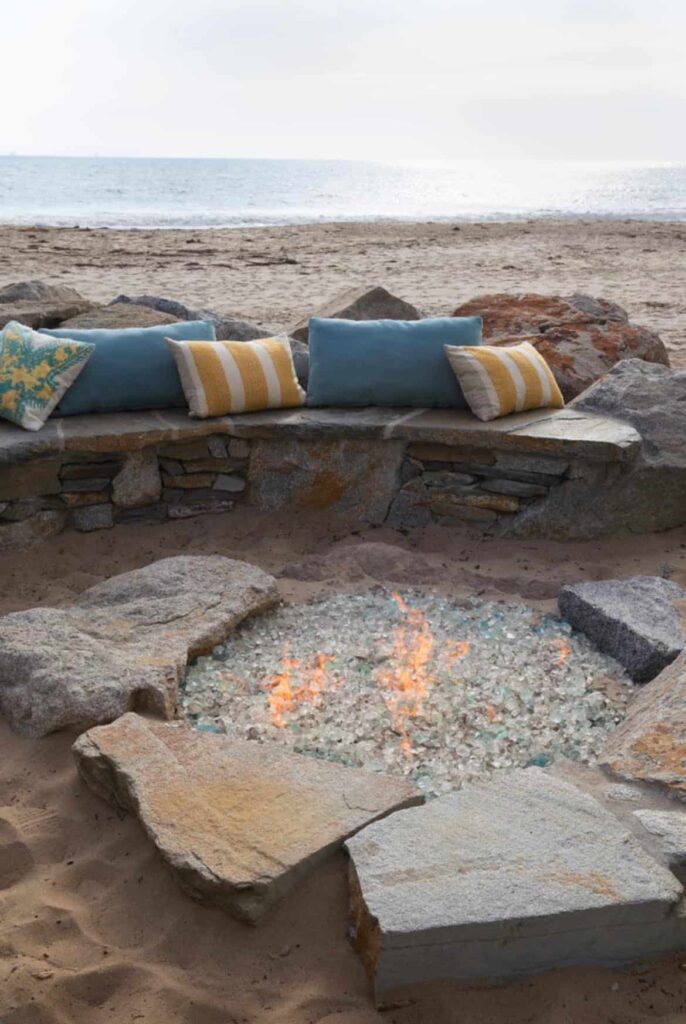
Beach-Specific Considerations
Tide and Water Level Awareness
When using a fire pit on the beach, it is essential to be mindful of tide and water levels. Ensure that your fire pit is set up above the high tide line to prevent damage from waves or potentially flooding the fire pit. Keep an eye on the water levels and be prepared to move your fire pit if needed. It is also wise to check the local tide charts and be aware of any expected changes in the tide to avoid any surprises or accidents.
Beach Regulations and Permits
Be aware of any beach regulations and permits that may be required when using a fire pit on the beach. Some beaches may have specific rules governing the use of fire pits, including designated areas, time restrictions, or permit requirements. Familiarize yourself with these regulations and ensure compliance to avoid any penalties or fines. Being considerate of the rules and regulations helps to ensure a safe and enjoyable experience for everyone.
Fire Safety in Sandy Environments
Fires in sandy environments pose their own set of challenges and safety considerations. Sandy areas are more prone to embers or sparks being carried by the wind, increasing the risk of fire spreading or causing accidents. It is crucial to pay close attention to wind conditions and employ safety measures such as fire screens or spark arrestors to prevent sparks from escaping the fire pit. Additionally, ensure that the fire pit is placed on stable ground and consider using a fireproof mat or base to protect the sand. By taking these fire safety precautions, you can enjoy a beach fire pit experience without compromising safety.
Conclusion
Using a fire pit in a beach or coastal area can be an incredibly enjoyable and memorable experience. However, it is crucial to prioritize safety and follow the necessary precautions to ensure a safe and responsible fire pit usage. By familiarizing yourself with fire regulations, selecting the right fire pit, preparing the fire pit area, and implementing necessary safety measures, you can enjoy the warmth and ambiance of the fire pit while minimizing any potential risks or environmental impacts. Whether you choose a traditional fire pit or explore alternative options, the key is to prioritize safety, respect the natural surroundings, and enjoy the fire pit experience to the fullest.
